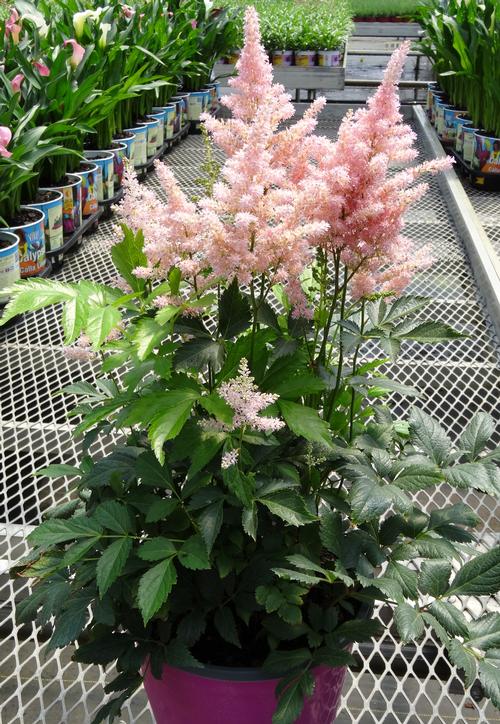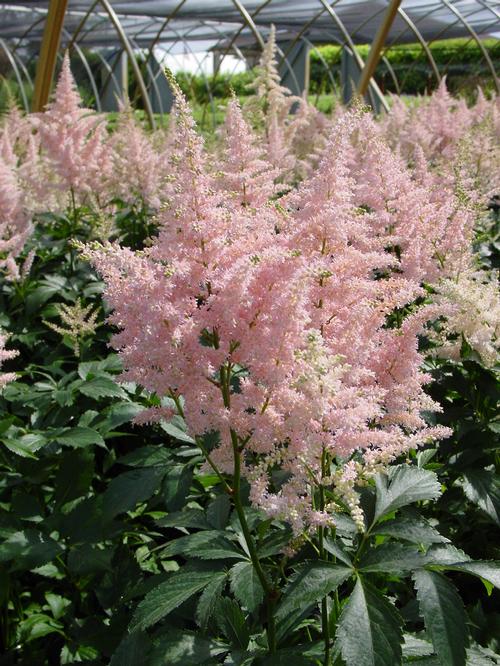Astilbe japonica 'Peach Blossom'
False Spirea
Sold Out
Early-mid season bloomer; glossy green foliage, large open plumes, light salmon-pink flowers
- · Light salmon-pink flowers
- · Early to mid-season blooms
- · Compact form
Recommended Substitution

Astilbe japonica 'Deutschland'
False Spirea
Early season bloomer; dark green foliage, under open plumes of creamy white flowers; medium sized plants are good for pots
| Item # | Pack | Size | Avail Units | Avail Plants | |
|---|---|---|---|---|---|
|
4507700
|
25 | 3-5 Eye | SOLD OUT | SOLD OUT | Login for Pricing |
|
4507707
|
100 | 3-5 Eye | SOLD OUT | SOLD OUT | Login for Pricing |
|
1707707
|
25 |
3-5 Eye
*Ships 07/29 - 08/19 |
SOLD OUT | SOLD OUT | Login for Pricing |
Height:
24 in
Spread:
20-24 in
Zone:
3-8

Astilbe japonica 'Peach Blossom' 2 gallon from 6-8 eye division
Exposure
| • | Morning Sun / Afternoon Shade |
| • | Shade Tolerant |
Nature Attraction
| • | Attracts Butterflies |
Critter Resistance
| • | Deer Resistant |
Attributes
| • | Mass Plant |
| • | Good Container Plant |
| • | Good Cut Flower / Foliage |
| • | Dried Flower |
Season of Interest (Flowering)
| • | Summer |
| • | Late Spring / Early Summer |


